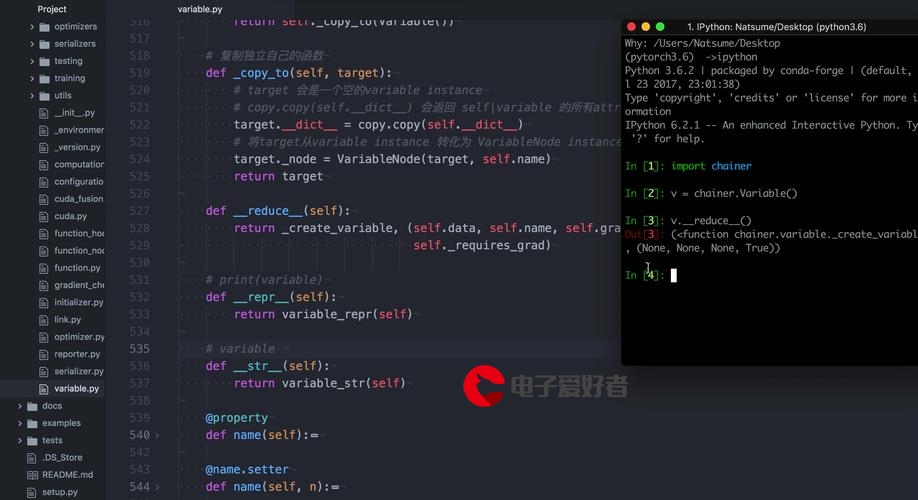 函数与RVA转换"/>
函数与RVA转换"/>
驱动开发:PE导出函数与RVA转换
在笔者上篇文章《驱动开发:内核扫描SSDT挂钩状态》中简单介绍了如何扫描被挂钩的SSDT函数,并简单介绍了如何解析导出表,本章将继续延申PE导出表的解析,实现一系列灵活的解析如通过传入函数名解析出函数的RVA偏移,ID索引,Index下标等参数,并将其封装为可直接使用的函数,以在后期需要时可以被直接引用,同样为了节约篇幅本章中的LoadKernelFile()内存映射函数如需要使用请去前一篇文章中自行摘取。
首先实现GetRvaFromModuleName()函数,当用户传入参数后自动将函数名解析为对应的RVA偏移或Index下标索引值,该函数接收三个参数传递,分别是wzFileName模块名,FunctionName所在模块内的函数名,Flag标志参数,函数输出ULONG64类型的数据。
// 从指定模块中得到特定函数的RVA或相对序号相对偏移
ULONG64 GetRvaFromModuleName(WCHAR *wzFileName, UCHAR *FunctionName, INT Flag)
{// 加载内核模块PVOID BaseAddress = LoadKernelFile(wzFileName);// 取出导出表PIMAGE_DOS_HEADER pDosHeader;PIMAGE_NT_HEADERS pNtHeaders;PIMAGE_SECTION_HEADER pSectionHeader;ULONGLONG FileOffset;PIMAGE_EXPORT_DIRECTORY pExportDirectory;// DLL内存数据转成DOS头结构pDosHeader = (PIMAGE_DOS_HEADER)BaseAddress;// 取出PE头结构pNtHeaders = (PIMAGE_NT_HEADERS)((ULONGLONG)BaseAddress + pDosHeader->e_lfanew);// 判断PE头导出表是否为空if (pNtHeaders->OptionalHeader.DataDirectory[IMAGE_DIRECTORY_ENTRY_EXPORT].VirtualAddress == 0){return 0;}// 取出导出表偏移FileOffset = pNtHeaders->OptionalHeader.DataDirectory[IMAGE_DIRECTORY_ENTRY_EXPORT].VirtualAddress;// 取出节头结构pSectionHeader = (PIMAGE_SECTION_HEADER)((ULONGLONG)pNtHeaders + sizeof(IMAGE_NT_HEADERS));PIMAGE_SECTION_HEADER pOldSectionHeader = pSectionHeader;// 遍历节结构进行地址运算for (UINT16 Index = 0; Index < pNtHeaders->FileHeader.NumberOfSections; Index++, pSectionHeader++){if (pSectionHeader->VirtualAddress <= FileOffset && FileOffset <= pSectionHeader->VirtualAddress + pSectionHeader->SizeOfRawData){FileOffset = FileOffset - pSectionHeader->VirtualAddress + pSectionHeader->PointerToRawData;}}// 导出表地址pExportDirectory = (PIMAGE_EXPORT_DIRECTORY)((ULONGLONG)BaseAddress + FileOffset);// 取出导出表函数地址PULONG AddressOfFunctions;FileOffset = pExportDirectory->AddressOfFunctions;// 遍历节结构进行地址运算pSectionHeader = pOldSectionHeader;for (UINT16 Index = 0; Index < pNtHeaders->FileHeader.NumberOfSections; Index++, pSectionHeader++){if (pSectionHeader->VirtualAddress <= FileOffset && FileOffset <= pSectionHeader->VirtualAddress + pSectionHeader->SizeOfRawData){FileOffset = FileOffset - pSectionHeader->VirtualAddress + pSectionHeader->PointerToRawData;}}AddressOfFunctions = (PULONG)((ULONGLONG)BaseAddress + FileOffset);// 取出导出表函数名字PUSHORT AddressOfNameOrdinals;FileOffset = pExportDirectory->AddressOfNameOrdinals;// 遍历节结构进行地址运算pSectionHeader = pOldSectionHeader;for (UINT16 Index = 0; Index < pNtHeaders->FileHeader.NumberOfSections; Index++, pSectionHeader++){if (pSectionHeader->VirtualAddress <= FileOffset && FileOffset <= pSectionHeader->VirtualAddress + pSectionHeader->SizeOfRawData){FileOffset = FileOffset - pSectionHeader->VirtualAddress + pSectionHeader->PointerToRawData;}}AddressOfNameOrdinals = (PUSHORT)((ULONGLONG)BaseAddress + FileOffset);// 取出导出表函数序号PULONG AddressOfNames;FileOffset = pExportDirectory->AddressOfNames;// 遍历节结构进行地址运算pSectionHeader = pOldSectionHeader;for (UINT16 Index = 0; Index < pNtHeaders->FileHeader.NumberOfSections; Index++, pSectionHeader++){if (pSectionHeader->VirtualAddress <= FileOffset && FileOffset <= pSectionHeader->VirtualAddress + pSectionHeader->SizeOfRawData){FileOffset = FileOffset - pSectionHeader->VirtualAddress + pSectionHeader->PointerToRawData;}}AddressOfNames = (PULONG)((ULONGLONG)BaseAddress + FileOffset);// 分析导出表ULONG uOffset;LPSTR FunName;ULONG uAddressOfNames;ULONG TargetOff = 0;for (ULONG uIndex = 0; uIndex < pExportDirectory->NumberOfNames; uIndex++, AddressOfNames++, AddressOfNameOrdinals++){uAddressOfNames = *AddressOfNames;pSectionHeader = pOldSectionHeader;for (UINT16 Index = 0; Index < pNtHeaders->FileHeader.NumberOfSections; Index++, pSectionHeader++){if (pSectionHeader->VirtualAddress <= uAddressOfNames && uAddressOfNames <= pSectionHeader->VirtualAddress + pSectionHeader->SizeOfRawData){uOffset = uAddressOfNames - pSectionHeader->VirtualAddress + pSectionHeader->PointerToRawData;}}FunName = (LPSTR)((ULONGLONG)BaseAddress + uOffset);// 如果找到则返回RVAif (!_stricmp((const char *)FunctionName, FunName)){// 等于1则返回RVAif (Flag == 1){TargetOff = (ULONG)AddressOfFunctions[*AddressOfNameOrdinals];// DbgPrint("索引 [ %p ] 函数名 [ %s ] 相对RVA [ %p ] \n", *AddressOfNameOrdinals, FunName, TargetOff);return TargetOff;}// 返回索引else if (Flag == 0){return *AddressOfNameOrdinals;}}}// 结束后释放内存ExFreePoolWithTag(BaseAddress, (ULONG)"LyShark");return 0;
}
调用该函数很容易,传入模块路径以及该模块内的函数名,解析出RVA地址或Index下标。
NTSTATUS DriverEntry(IN PDRIVER_OBJECT Driver, PUNICODE_STRING RegistryPath)
{// 函数分别传入 [模块路径,函数名,标志=1] 返回该导出函数的RVAULONG64 get_rva = GetRvaFromModuleName(L"\\SystemRoot\\system32\\ntoskrnl.exe", "NtReadFile", 1);DbgPrint("NtReadFile RVA = %p \n", get_rva);// 函数分别传入 [模块路径,函数名,标志=0] 返回该导出函数的ID下标ULONG64 get_id = GetRvaFromModuleName(L"\\SystemRoot\\system32\\ntoskrnl.exe", "NtReadFile", 0);DbgPrint("NtReadFile ID = %d \n", get_id);Driver->DriverUnload = UnDriver;return STATUS_SUCCESS;
}
编译并运行程序,分别获取到ntoskrnl.exe模块内NtReadFile函数的RVA,Index索引,调用效果如下;
第二个函数GetModuleNameFromRVA()则实现传入RVA或者函数Index序号,解析出函数名,具体实现方法与如上函数基本一致,仅仅只是在过滤时做了调整。
// 根据传入的函数RVA或Index下标,获取该函数的函数名
PCHAR GetModuleNameFromRVA(WCHAR *wzFileName, ULONG64 uRVA, INT Flag)
{// 加载内核模块PVOID BaseAddress = LoadKernelFile(wzFileName);// 取出导出表PIMAGE_DOS_HEADER pDosHeader;PIMAGE_NT_HEADERS pNtHeaders;PIMAGE_SECTION_HEADER pSectionHeader;ULONGLONG FileOffset;PIMAGE_EXPORT_DIRECTORY pExportDirectory;// DLL内存数据转成DOS头结构pDosHeader = (PIMAGE_DOS_HEADER)BaseAddress;// 取出PE头结构pNtHeaders = (PIMAGE_NT_HEADERS)((ULONGLONG)BaseAddress + pDosHeader->e_lfanew);// 判断PE头导出表是否为空if (pNtHeaders->OptionalHeader.DataDirectory[IMAGE_DIRECTORY_ENTRY_EXPORT].VirtualAddress == 0){return 0;}// 取出导出表偏移FileOffset = pNtHeaders->OptionalHeader.DataDirectory[IMAGE_DIRECTORY_ENTRY_EXPORT].VirtualAddress;// 取出节头结构pSectionHeader = (PIMAGE_SECTION_HEADER)((ULONGLONG)pNtHeaders + sizeof(IMAGE_NT_HEADERS));PIMAGE_SECTION_HEADER pOldSectionHeader = pSectionHeader;// 遍历节结构进行地址运算for (UINT16 Index = 0; Index < pNtHeaders->FileHeader.NumberOfSections; Index++, pSectionHeader++){if (pSectionHeader->VirtualAddress <= FileOffset && FileOffset <= pSectionHeader->VirtualAddress + pSectionHeader->SizeOfRawData){FileOffset = FileOffset - pSectionHeader->VirtualAddress + pSectionHeader->PointerToRawData;}}// 导出表地址pExportDirectory = (PIMAGE_EXPORT_DIRECTORY)((ULONGLONG)BaseAddress + FileOffset);// 取出导出表函数地址PULONG AddressOfFunctions;FileOffset = pExportDirectory->AddressOfFunctions;// 遍历节结构进行地址运算pSectionHeader = pOldSectionHeader;for (UINT16 Index = 0; Index < pNtHeaders->FileHeader.NumberOfSections; Index++, pSectionHeader++){if (pSectionHeader->VirtualAddress <= FileOffset && FileOffset <= pSectionHeader->VirtualAddress + pSectionHeader->SizeOfRawData){FileOffset = FileOffset - pSectionHeader->VirtualAddress + pSectionHeader->PointerToRawData;}}AddressOfFunctions = (PULONG)((ULONGLONG)BaseAddress + FileOffset);// 取出导出表函数名字PUSHORT AddressOfNameOrdinals;FileOffset = pExportDirectory->AddressOfNameOrdinals;// 遍历节结构进行地址运算pSectionHeader = pOldSectionHeader;for (UINT16 Index = 0; Index < pNtHeaders->FileHeader.NumberOfSections; Index++, pSectionHeader++){if (pSectionHeader->VirtualAddress <= FileOffset && FileOffset <= pSectionHeader->VirtualAddress + pSectionHeader->SizeOfRawData){FileOffset = FileOffset - pSectionHeader->VirtualAddress + pSectionHeader->PointerToRawData;}}AddressOfNameOrdinals = (PUSHORT)((ULONGLONG)BaseAddress + FileOffset);// 取出导出表函数序号PULONG AddressOfNames;FileOffset = pExportDirectory->AddressOfNames;// 遍历节结构进行地址运算pSectionHeader = pOldSectionHeader;for (UINT16 Index = 0; Index < pNtHeaders->FileHeader.NumberOfSections; Index++, pSectionHeader++){if (pSectionHeader->VirtualAddress <= FileOffset && FileOffset <= pSectionHeader->VirtualAddress + pSectionHeader->SizeOfRawData){FileOffset = FileOffset - pSectionHeader->VirtualAddress + pSectionHeader->PointerToRawData;}}AddressOfNames = (PULONG)((ULONGLONG)BaseAddress + FileOffset);// 分析导出表ULONG uOffset;LPSTR FunName;ULONG uAddressOfNames;ULONG TargetOff = 0;for (ULONG uIndex = 0; uIndex < pExportDirectory->NumberOfNames; uIndex++, AddressOfNames++, AddressOfNameOrdinals++){uAddressOfNames = *AddressOfNames;pSectionHeader = pOldSectionHeader;for (UINT16 Index = 0; Index < pNtHeaders->FileHeader.NumberOfSections; Index++, pSectionHeader++){if (pSectionHeader->VirtualAddress <= uAddressOfNames && uAddressOfNames <= pSectionHeader->VirtualAddress + pSectionHeader->SizeOfRawData){uOffset = uAddressOfNames - pSectionHeader->VirtualAddress + pSectionHeader->PointerToRawData;}}FunName = (LPSTR)((ULONGLONG)BaseAddress + uOffset);TargetOff = (ULONG)AddressOfFunctions[*AddressOfNameOrdinals];// 等于1则通过RVA返回函数名if (Flag == 1){if (uRVA == TargetOff){return FunName;}}// 返回索引else if (Flag == 0){if (uRVA == *AddressOfNameOrdinals){return FunName;}}}// 结束后释放内存ExFreePoolWithTag(BaseAddress, (ULONG)"LyShark");return "None";
}
调用GetModuleNameFromRVA()并传入相应的RVA偏移或Index下标。
NTSTATUS DriverEntry(IN PDRIVER_OBJECT Driver, PUNICODE_STRING RegistryPath)
{DbgPrint("hello lyshark \n");PCHAR function_name;// 传入函数RVA得到函数名function_name = GetModuleNameFromRVA(L"\\SystemRoot\\system32\\ntoskrnl.exe", 0x5e5220, 1);DbgPrint("根据RVA得到函数名 = %s \n", function_name);// 传入函数下标得到函数名function_name = GetModuleNameFromRVA(L"\\SystemRoot\\system32\\ntoskrnl.exe", 1472, 0);DbgPrint("根据Index得到函数名 = %s \n", function_name);Driver->DriverUnload = UnDriver;return STATUS_SUCCESS;
}
编译并运行程序,调用后分别获取到RVA=0x5e5220或Index=1472的函数名;
更多推荐
驱动开发:PE导出函数与RVA转换












发布评论